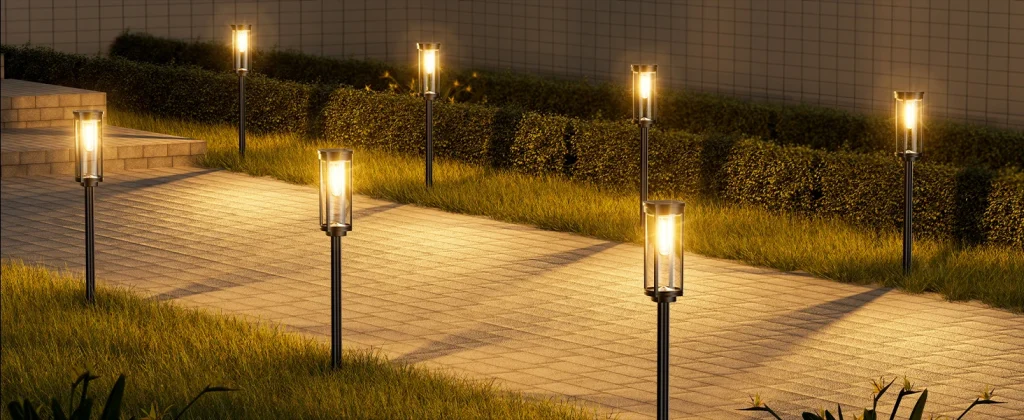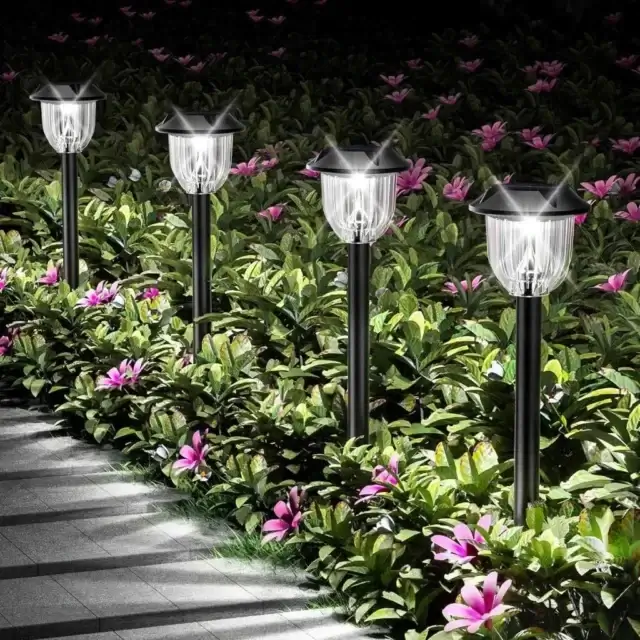Darkness transforms a familiar pathway into a maze of hazards. Uneven stones trip unsuspecting feet, shadows cloak obstacles, and poorly lit corners invite mishaps. Solar sidewalk lights cut through that gloom, offering a straightforward solution to nighttime safety. Powered by the sun, these fixtures deliver reliable illumination without complicated setups or ongoing costs. Beyond convenience, they address a real need: the U.S. Consumer Product Safety Commission reports over 1 million emergency room visits annually stem from outdoor falls, many preventable with better lighting. This guide explores how solar sidewalk lights enhance safety, spotlighting their practical features and real-world impact.

Why Safety Hinges on Lighting
Visibility defines safe navigation after dusk. A well-lit path reveals cracks, roots, or debris that might otherwise send someone sprawling. Darkness amplifies risks, especially for older adults—falls rank as their leading cause of injury, per the Centers for Disease Control and Prevention. Solar sidewalk lights tackle this head-on. They stake into the ground, charge by day, and glow by night, ensuring consistent light where it’s needed most. No wires, no fuss, just dependable brightness.
Crime drops under light too. The U.S. Department of Justice notes that well-lit areas deter opportunistic theft and vandalism. Solar lights extend that protection Secondary security to walkways and yards, making nighttime movement safer and less stressful. This guide digs into their role in keeping the dark at bay.
Key Features for Nighttime Protection
Brightness That Counts
Solar sidewalk lights vary in output, measured in lumens. A range of 100 to 300 lumens suits most pathways—enough to expose hazards without blinding glare. Look for LEDs with adjustable settings. Some models offer motion sensors, spiking brightness when footsteps approach. The BITPOTT Bright Solar Pathway Lights, for instance, deliver 200 lumens of warm white light, casting a clear, inviting glow over uneven terrain.
Durability Against the Elements
Outdoor lights face rain, snow, and heat. Quality units boast IP65 ratings or higher, meaning they’re dust-tight and water-resistant. Polycarbonate or stainless steel casings shrug off rust and cracks. The U.S. National Renewable Energy Laboratory highlights that durable solar lights last up to 15 years, ensuring steady safety through countless nights.
Placement for Maximum Effect
Spacing matters. Experts at the Illuminating Engineering Society recommend placing lights 6 to 10 feet apart along walkways, staggered for overlap. Low-profile designs, 8 to 12 inches tall, avoid tripping risks while lighting the ground. Angled panels catch sunlight efficiently, even in winter’s slant. Proper placement turns a pitch-black yard into a navigable space.
Real-World Safety Wins
Preventing Falls
Data backs the impact. A 2022 study from the American Journal of Public Health found homes with outdoor lighting saw 30% fewer fall-related injuries among seniors. Solar sidewalk lights fit anywhere—driveways, steps, garden paths—without trenching for wires. One user swapped out a flickering porch bulb for solar stakes along her walkway. Result: no stumbles, no sprains, just sure footing.
Deterring Intruders
Light spooks prowlers. The Bureau of Justice Statistics shows burglaries drop 20% in well-lit neighborhoods. Solar lights with dusk-to-dawn sensors kick on automatically, no switches needed. A small business owner in Ohio lined his parking lot with 300-lumen units. Nighttime loitering vanished, and staff felt safer heading to their cars.
Emergency Readiness
Power outages kill traditional lights. Solar units keep shining, storing energy in batteries—some hold 12 hours of charge. The Federal Emergency Management Agency stresses reliable lighting for disaster prep. During a 2023 blackout in Texas, solar-lined paths guided families safely indoors, proving their worth when grids fail.
Choosing the Right Solar Light
Battery Power
Lithium-ion or Ni-MH batteries dominate. Lithium-ion offers longer life—up to 2,000 cycles—while Ni-MH handles cold better. A 1000mAh capacity ensures 8-12 hours of light. Check charge time too; 6-8 hours under full sun keeps them primed.
Solar Panel Efficiency
Monocrystalline panels hit 20% efficiency, outpacing polycrystalline’s 15%. Size counts—larger panels (2-3 watts) charge faster, even on cloudy days. The U.S. Department of Energy notes efficient panels extend runtime, critical for winter’s short days.
Design and Ease
Sleek stakes blend into landscapes, avoiding clutter. Tool-free setup—push, angle, done—suits anyone. Look for warranties; two years signals quality. User reviews on sites like EnergySage praise models with intuitive mounts and steady output.
Cost Meets Safety
Solar lights cost $20 to $50 each, pricier than wired setups at $10-$15. But skip the electrician—$100-$200 saved—and energy bills vanish. The U.S. Environmental Protection Agency estimates solar lighting trims household energy costs by 75%. A set of eight might run $200 upfront, yet pays off in safety and zero upkeep over a decade.
Beyond the Basics
Smart Features
Motion sensors or timers add flair. Sensors spike light when needed, saving power. Timers adjust for seasons—longer in winter, shorter in summer. Some units sync with apps, letting you tweak settings from your couch.
Eco-Friendly Edge
Solar cuts carbon. The EPA says replacing grid-powered lights with solar slashes emissions by 50 pounds yearly per unit. No fuel, no fumes—just clean energy keeping you safe.
Aesthetic Boost
Safety doesn’t mean ugly. Warm white tones (2700K-3000K) soften harshness, while sleek casings complement stone or brick. A landscaper in Colorado swapped bulky lanterns for low solar stakes. His client’s path went from dim and dated to sharp and secure.
Making the Switch
Start small—four lights for a key walkway. Test spacing, tweak angles. Scale up as confidence grows. The National Safety Council urges prioritizing high-traffic zones: front steps, garage paths, back doors. Solar’s flexibility fits any layout, no permits or pros required.
Nighttime safety shouldn’t be a gamble. Solar sidewalk lights strip away the guesswork, delivering steady, no-cost illumination where it matters. Falls fade, intruders rethink, and emergencies lose their edge. The U.S. Department of Energy sees solar adoption climbing 20% by 2030—safety’s future is already here. Stake in, light up, step sure.

Comments